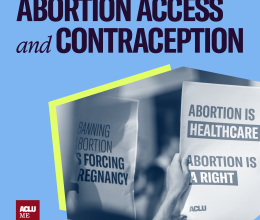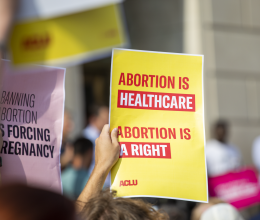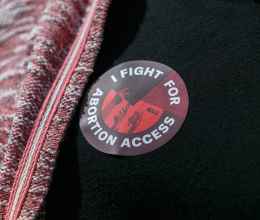Researchers Dr. Gretchen Sisson and Dr. Katrina Kimport of Advancing New Standards in Reproductive Health (ANSIRH) recently presented a study in which they identified and traced abortion-related story lines in American film and television since 1916. They found 310 pregnancy decision related story lines. Out of that 310, 173 (55.8%) pregnancies resulted in abortion, 80 (25,8%) in parenting, 13 (4.2%) in adoption, 21 (6.7%) in miscarriage, and 16 (5.1%) were unresolved. 13.5% of the story lines ended with the death of the woman who had considered an abortion, regardless of whether or not they actually had an abortion. Of that 13.5%, approximately half died from complications arising from the abortion.
Sisson and Kimport began this research project to test the assumption, present in popular discourse, that “abortion stories are rare, avoided, and enduringly taboo in American popular culture.” Their research revealed that these assumptions about under representation were false: abortion stories occur more frequently than popular discourse would suggest. The frequency with which abortion plot lines appeared tended to ebb and flow in accordance to how prevalent discussion of abortion were in the general public. These fictional accounts of abortion stories did contain some distortions of truth, though.
The researchers made particular note of how many plot lines ended in death for women who had abortions. They suggest that this narrative linkage contributes to the myth that abortion is a risky and complex medical procedure. In reality, first-trimester abortions are some of the safest medical procedures – less than 0.05% involve major complications that might require hospital care. The rate of abortion-related death in these fictional narratives was roughly 9%; the current risk of death from abortion is statistically equivalent to zero.
Many of the narratives suggested that the women considering abortion weren’t mothers and had no intention of being mothers. These depictions aren’t true. Most women who seek abortions are already mothers. In fact, 61% of women in the US who have abortions already have one or more children. Many of the women depicted were teenagers grappling with their pregnancy choices, giving the impression that abortion is mainly an issue for young women who have "gotten themselves in trouble." In actuality, only 18 percent of US women who obtain abortions are teenagers. The Guttmacher Institute has published comprehension demographic research on abortion statistics.
Why is this research important? Sisson and Kimport's findings demonstrate that there is an "interactive relationship between media representations, cultural attitudes, and policies around abortion regulation." The abortion narratives we take in affect our understanding of the decision and the process of terminating a pregnancy. True stories about the abortion procedure tell us that, because of Roe v. Wade, abortions are safe and highly regulated medical procedures. Truthful and realistic cultural narratives tell us that abortion is more common than we might think – 1 in 3 women will have an abortion by age 45. Truthful abortion stories reveal that the average woman who seeks an abortion doesn't make this decision carelessly or hastily. The average woman who has an abortion is a woman who knows that she is unable (for a variety of reasons) to adequately provide for another child. True stories and realistic stories help demystify abortion, which, in turn, may help reduce abortion stigma.









